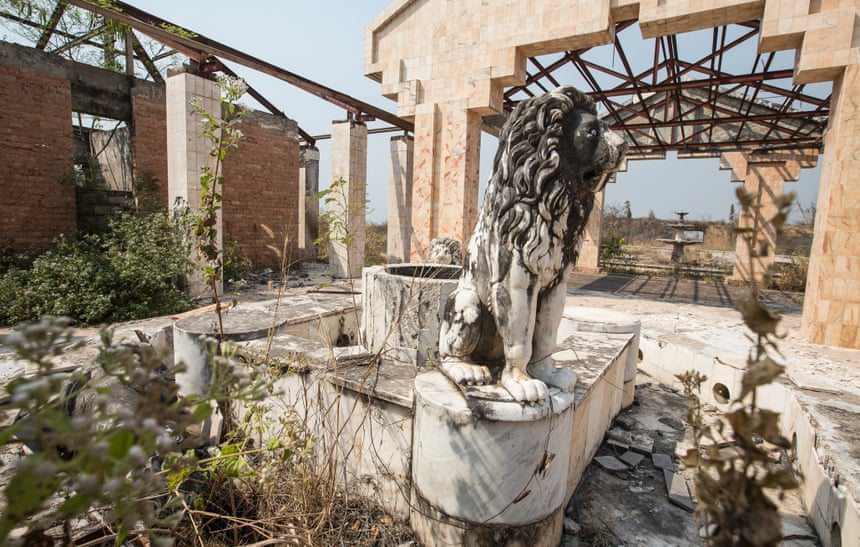Mobutu Sese Seko Kuku Ngbendu Wa Za Banga, during his tenure from 1965 to 1997, was accused of ruling his country with brutality, corruption, and ruthlessness. Initially a soldier in the Belgian colonial army, he became a journalist and an active participant in politics. After his return to the military, he became widely involved in the politics of the newly independent Democratic Republic of Congo.
He subsequently launched a coup that began his 32-year reign of terror, during which he set out to punish and execute his opponents in public as a way of teaching others not to cross him. Making himself a cult, the dictator, among other things, established the Mobutu Good Will Fund as a fundraising effort to end poverty in the country.
However, he listed himself as the only beneficiary meaning that all the money went to him directly. While Zairiens (Mobuto had renamed his country Zaire) were living in poverty, he began the shameful practice of using taxpayers’ money to live in luxury, and in transforming his rural village, Gbadolite, into a city.
By the time he was deposed in 1997, Gbadolite did not only have an airport with a runway long enough to handle supersonic Concordes, but also a nuclear bomb-proof bunker that could house more than 500 people and was believed to be the largest in Africa.

His ancestral home, Gbadolite in the 1970s was a remote village of about 1,500 people living in “mudbrick huts and not even marked on maps.” Thanks to Mobuto, the small town located 700 miles northeast of Kinshasa, was dramatically transformed, with schools, state-of-the-art hospitals, supermarkets, a five-star hotel, and the 3,200m runway for the supersonic Concordes which Mobuto often chartered for his trips abroad.
The village later earned the title of “Versailles of the jungle” as it hosted the three luxurious castles Mobuto built with public money for his personal use.
A report by The Guardian said his private palace, seven miles outside town in Kawele, “brimmed with paintings, sculptures, stained glass, ersatz Louis XIV furniture, marble from Carrara in Italy and two swimming pools surrounded by loudspeakers playing his beloved Gregorian chants or classical music.
“It hosted countless gaudy nights with Taittinger champagne, salmon and other food served on moving conveyer belts by Congolese and European chefs.”
One of the other palaces was designed as a cluster of Chinese pagodas and the other for state business. In one of these palaces was the nuclear shelter, which sources say was connected to the Ubangi River by a secret tunnel, giving access to the military harbor at the village of N’dangi.
Four or five times a year, Mobuto, who did not joke with bottles of his favorite Taittinger champagne, traveled to Gbadolite to enjoy these niceties without extending them to the rest of the people in the vast central African country.
Zaireans were all this time living in poverty with poor access to healthcare and few jobs. Most of the government infrastructure had collapsed and the economy was in shambles and in debt. Among a band of looters of his generation, Mobuto, as of 1983, had stashed away about $5 billion in a Swiss Bank account, which was almost the same amount of debt in Zaire (now DR Congo).
At the start of the 1990s with the Cold War thawing, Mobutu was forced to change his tactics. He reinstated multi party-ism. Slowly, his association with some of the world leaders including the U.S. started suffering because of his human rights record.
At this time, he was also in advanced stages of prostate cancer. When he went overseas for treatment, rebel forces led by Joseph Kabila gained ground in the country. Kabila successfully led a rebellion and ousted Mobutu in 1997. Mobutu fled to exile in Togo and later Morocco, where he died in September the same year.
The former military dictator left behind a string of chaos in one of Africa’s resource-rich countries. In his quest to be the ‘president for life’, he committed atrocities that denied the country a chance to exist away from its current reality. His greed for power and wealth would become his downfall.
Following the collapse of his regime, Gbadolite was raided, and most of what was in the palaces were looted. The structures of the palaces, however, remain alone in the middle of the jungle in DR Congo, including the bunker and other buildings.










